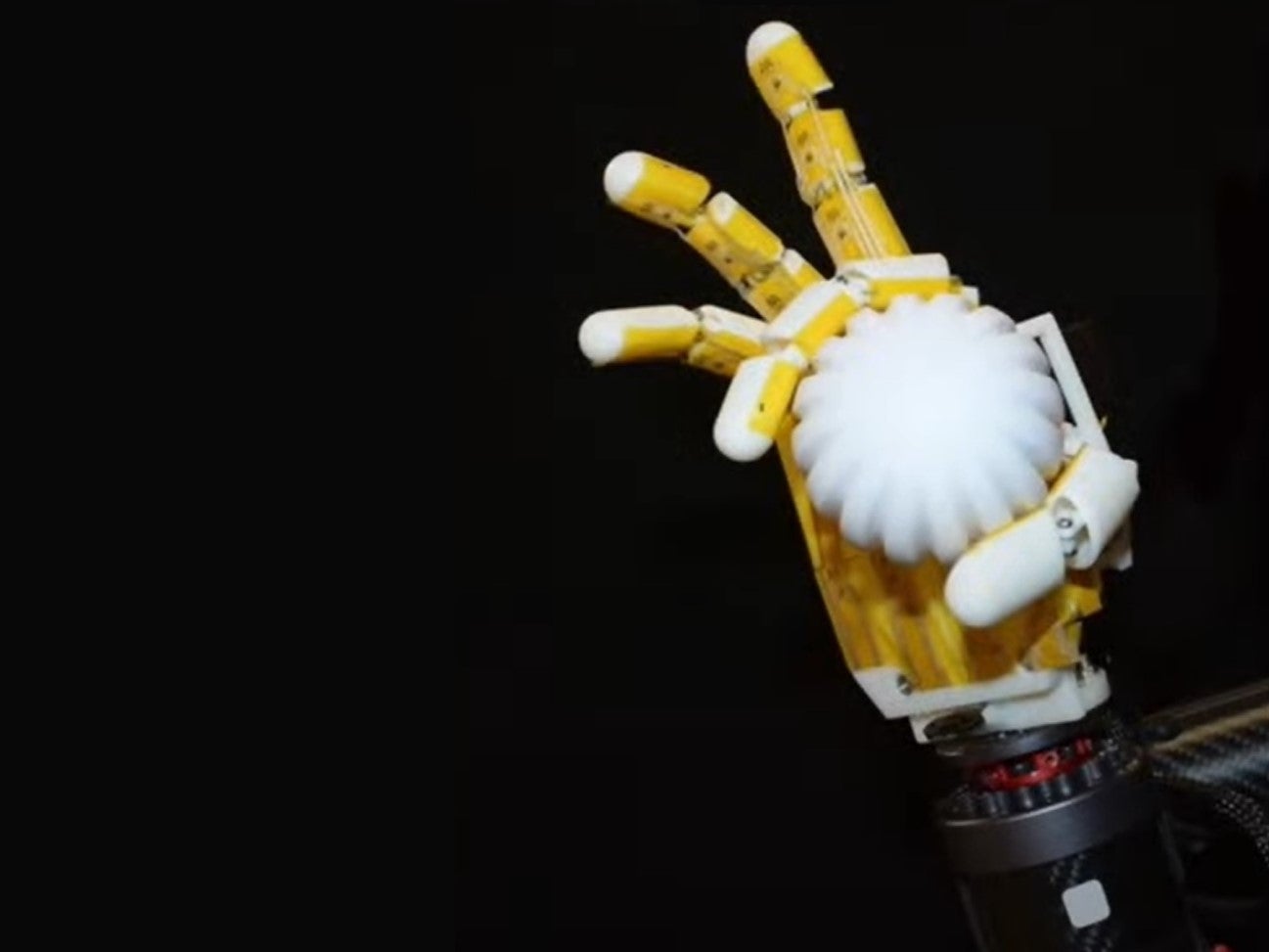Robots gain sense of touch with new artificial skin
Printed skin helps robots sense temperature, pressure and even toxic chemicals

Scientists have developed an artificial skin that gives robots a sense of touch that is similar to humans.
The skin allows robots to sense temperature, pressure and even whether something is toxic, according to the researchers at the California Institute of Technology (Caltech) who created it.
Applications for the technology range from detecting a pollution source in a river, to ‘feeling’ whether a suspicious piece of luggage at an airport has traces of explosives on it.
“Modern robots are playing a more and more important role in security, farming, and manufacturing,” said Wei Gao, an assistant professor of medical engineering at Caltech whose lab developed the artificial skin.
“Can we give these robots a sense of touch and a sense of temperature? Can we also make them sense chemical like explosives and nerve agents or biohazards like infectious bacteria and viruses? We’re working on this.”
The technology forms part of a robotic platform that can connect to sensors attached to human skin, allowing someone to control a robotic arm while receiving feedback through their own skin.
The sensors within the artificial skin are embedded in hydrogel, which gives the robotic hand a soft, “squishy” feel similar to human flesh. These sensors can be printed onto the skin, similar to the way an inkjet printer works.
“Inkjet printing has this cartridge that ejects droplets, and those droplets are an ink solution, but they could be a solution that we develop instead of regular ink,” said Dr Gao. “We’ve developed a variety of inks of nanomaterials for ourselves.”
The researchers now hope to develop the system further to improve its durability and functionality for commercial applications.
“I think we have shown a proof of concept, but we want to improve the stability of this robotic skin to make it last longer,” Dr Gao said.
“By optimising new inks and new materials, we hope this can be used for different kinds of targeted detections. We want to put it on more powerful robots and make them smarter and more intelligent.”
A paper describing the artificial skin, titled ‘All-printed soft human-machine interface for robotic physiochemical sensing’, was published in the latest issue of the journal Science Robotics.
Join our commenting forum
Join thought-provoking conversations, follow other Independent readers and see their replies
Comments
Bookmark popover
Removed from bookmarks